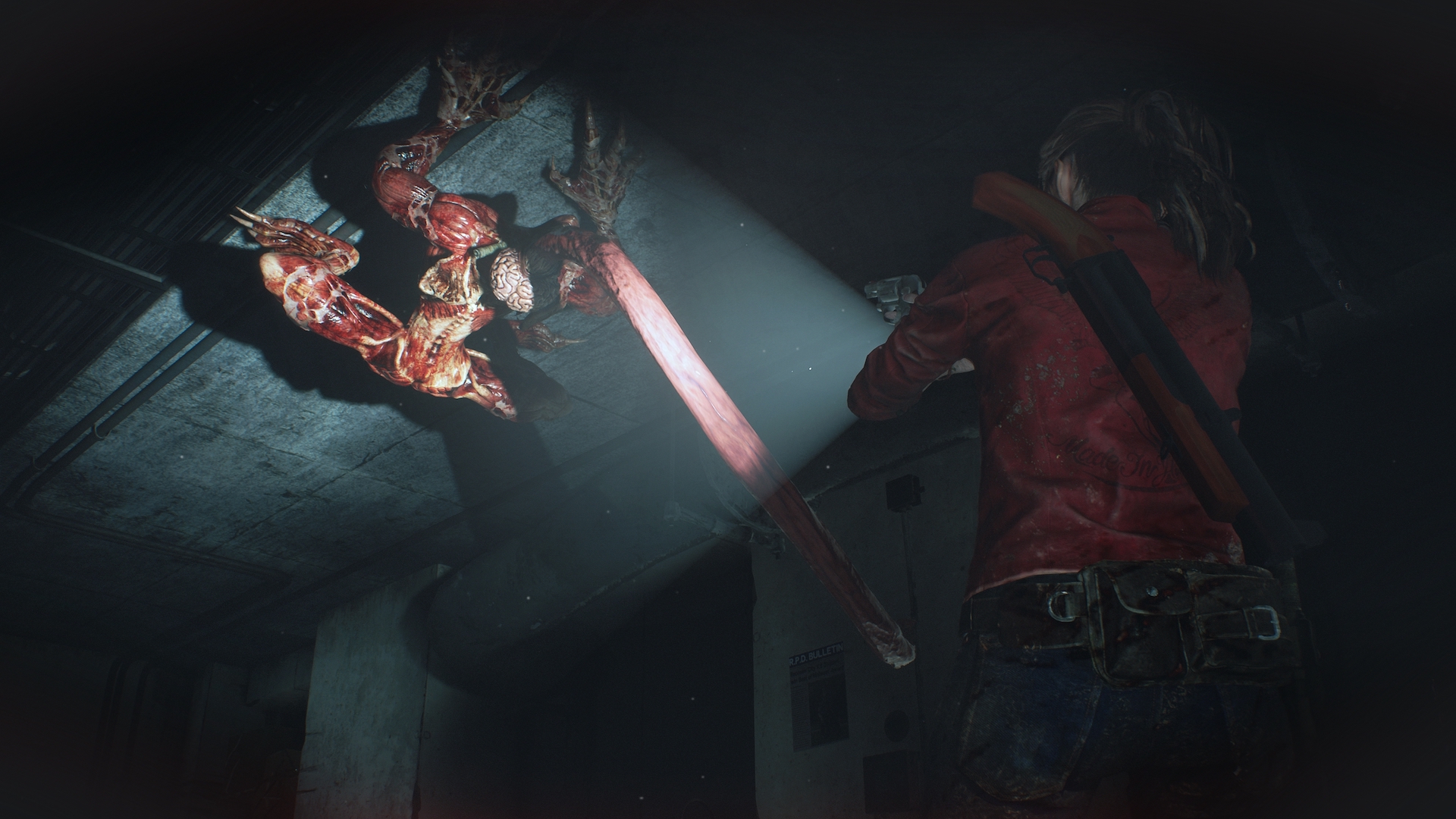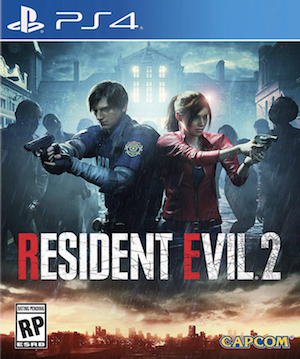
We recently got our hands on with the much-anticipated Resident Evil 2 for current generation of consoles and modern gaming PCs. Announced way back in 2015 and only revealed last year, Resident Evil 2 is more than a remake of the 1998 title. Continuing the same claustrophobic feel that the original game was known for, Resident Evil 2 not only manages to push visual barriers on consoles and gaming PCs, but also manages to deliver a phenomenal gameplay experience that will please action and horror enthusiasts in a number of different ways. Resident Evil 2 successfully translates a 20-year-old game for the modern era and then manages to present intriguing gameplay mechanics in front of an audience who may not have even heard or played the original. It’s shocking and gratifying to see a game reimagined for the current era, whilst respecting its source material.
The original Resident Evil 2 is largely considered to be of the best survival horror games of all time. And one of the reasons behind that was its dark and eerie music that inserted suspense into the players’ mind at every step of the way. But with this new title, the developers have upped the ante as far as audio design is concerned. The game uses dynamic mixing stage along with binaural technology which accordingly tweaks the hearing frequency of outgoing sounds from your TV set. In simpler terms, if a door behind the character is shut, you will hear the sound from back of your ears. Even simple audibles like zombies roaring or the dynamic background music which changes accordingly to the situation does a great job of relaying the atmosphere to the player.
Talking about the atmosphere, Resident Evil 2 features drastic differences in terms of tone and art style compared to the original. In 1998, the game featured mostly well-lit areas but the 2019 version is much darker and tense and the developers have utilized some excellent lighting techniques to achieve the desired results. Resident Evil 2 is perhaps one of the finest examples of lighting technology by using a completely physical based rendering solution that helps in adding a sense of suspension and disbelief in player’s heart at times.
Resident Evil 2 also manages to deliver some excellent looking cutscenes and dare I say, it also renders one of the best if not the best looking cutscenes in a video game. Backed up by some exceptional motion capture and animation work, and once again, a complete adherence to physical based lighting results into realistic looking characters. At times, the cutscenes and certain gameplay sections look eerily close to real life, whose impact is further enhanced by the awesome weather and post processing effects. Although the game doesn’t use a dynamic weather system (it doesn’t need one due to the focus on interiors), seeing the rain effect in action along with your character’s hair and clothes getting wet is pretty gratifying.
Furthermore, Resident Evil 2 also delivers the most detailed looking zombies of all time in a video game. Some of them look outright scary and some are detestable. Regardless of your feelings towards them, the developers have nailed their design with most zombies looking unique and different, not to mention disgusting. Overall, Resident Evil 2, marks a drastic shift in the technical capabilities of the RE Engine, specially in its lighting, audio design and cutscene rendering.
Now, let’s talk about how the game performs on the PC, Xbox One X and PS4 Pro. As usual, let’s begin with the PC version. The game’s recommended hardware requirements suggest an Intel Core i7-3770 or AMD FX-9590 or better, 8GB of memory and NVIDIA GeForce GTX 1060 or AMD Radeon RX 480 with 3GB VRAM. We tested this game on our test PC which includes a GTX 1080Ti, 16GB of GDDR4 memory and Ryzen 1700 CPU. The game features a wide range of graphical settings and it seems that it will likely be scalable across a wide range of hardware. RE Engine on PC allows gamers to select between DX 11 and DX 12 APIs and we decided to run with the latter. Other settings include rendering mode which allows players to render the game in Normal or Interlaced mode. The latter reduces the image quality by outputting a composite image with lines. This is likely an artistic option since it has next to no impact on performance at all. Next up are anti-aliasing which features the likes of FXAA + TAA and SMAA, Image quality up to 200%, frame rate, V-sync, shadow quality, shadow cache, screen space reflections, subsurface Scattering, motion blur, lens flare, film noise and more. There is also an option to adjust texture quality which allocates up to 8GB of your hardware’s VRAM. This is one of the most intensive options in the game which can drag down the game’s performance. The graphical settings also came packed with a visual indicator of what the settings really do and what kind of impact it has on performance and the amount of VRAM each setting consumes. Such a presentation is appreciated although it does seem to be a bit buggy. Running the game at max settings required more than 12GB of memory but we were able to run everything maxed out on our GTX 1080 Ti card (which by the way has 11GB of memory). There were next to no performance hits in our playthrough, so, yes, the visual indicator may not always be correct, at least in our case.
Running the game at maxed settings on the PC is the way to play this game. The visuals look stunning, the already fantastic looking cutscenes manage to look even better and the lighting effects are through the roof. From a pure technical perspective, this title on the PC (along with last year’s Red Dead Redemption 2) is most likely our early look at next-gen capabilities, although, I must add that hair rendering still needs work.
So, how do the PS4 Pro and Xbox One X versions stack up against the PC build and most importantly what are the core differences between themselves? To begin with, both Xbox One X and PS4 Pro versions render at 2880×1620 resolution with both platforms targeting 60 frames per second. Performance is more or less locked in the sections we played, so, overall, this is a pretty tight effort by the developers. Both platforms utilize temporal anti-aliasing along with 1:1 core asset package, shadow quality and lighting effects. However, the PS4 Pro version showcases a bit of aliasing effect at times resulting into jaggies on distant objects. This happened very rarely but it’s something we observed a couple of times. This inconsistency, however, was absent on the Xbox One X build.
Compared to the PC build, both PS4 Pro and Xbox One X, for some odd reason, feature a darker look and feel. Now, we know this may be down to the in-game brightness settings but we don’t usually change that setting and always run at default parameter. The PC version is easily head and shoulders above the console versions and it leads in several parameters like superior texture quality, shadow cache, screen space reflections and more. The PC version at maxed setting is an absolute stunner and even a powerful home console like Xbox One X is no where close to it. Resident Evil 2 is one of those rare cases where the PC version is way ahead of its console counterparts and it really makes us excited about the future of next-gen visuals.
In the end, Resident Evil 2 is a treat on whichever platform you play the game on. Advance visual effects along with the best in class lighting effects and cutscenes elevate Resident Evil 2 to an all together different graphical territory. Resident Evil 2 makes a serious statement for the RE Engine. The engine and its framework are ready and scalable for the inevitable Resident Evil 8 and we can’t wait to see where the developers take it next.















